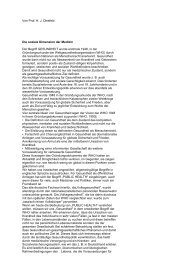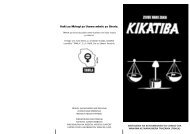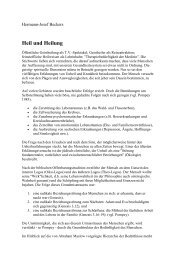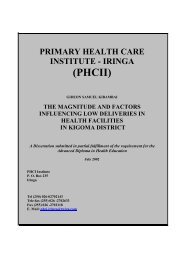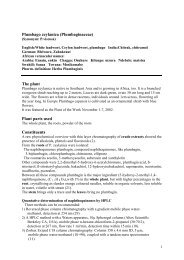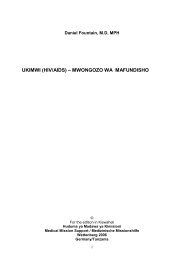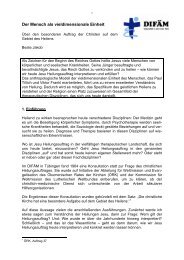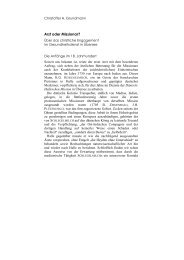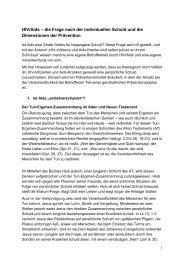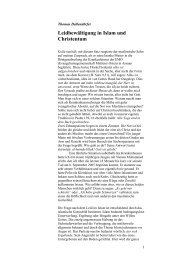Tabebuia impetiginosa, Tabebuia avellanedae ... - MMH/MMS
Tabebuia impetiginosa, Tabebuia avellanedae ... - MMH/MMS
Tabebuia impetiginosa, Tabebuia avellanedae ... - MMH/MMS
Create successful ePaper yourself
Turn your PDF publications into a flip-book with our unique Google optimized e-Paper software.
Common effects with cell cultures<br />
An extract of T. <strong>impetiginosa</strong> inner bark was tested with washed rabbit platelet and<br />
cultured rat aortic vascular smooth muscle cells in vitro. N-hexane, chloroform and<br />
ethyl acetate fractions inhibited platelet aggregation induced by collagen and<br />
arachidonic acid dose dependently. The chloroform fraction inhibited cell<br />
proliferation, DNA synthesis, extracellular signal regulated kinase, and mitogen<br />
activated protein kinase (31).<br />
Lapachol and its related compounds are toxic for eukaryotic BSC-40 African green<br />
monkey cells. But they are not toxic when applied as topic preparations on mice.<br />
Their protein synthesis was not inhibited (24).<br />
Lapacho compounds, together with some synthetic analogues were evaluated in vitro<br />
against the growth of the human keratinocyte cell line HaCaT. The IC50 value of 0.7<br />
µM fl-lapachone showed an activity comparable to that of the antipsoriatic drug<br />
anthranile. 2-Acetyl-8-hydronaphtho(2,3-b)furan-4,9-dione, prepared in a four-step<br />
synthesis was the most potent inhibitor with an IC50 value of 0.35 µM. Other active<br />
compounds of lapachone inhibited keratinocyte growth with IC50 values in the range<br />
of 0.5-3.0 µM. However, as already observed with anthtranile, remarkable damages<br />
were observed in the cell membranes, e.g. leakage of lactate dehydrogenase into the<br />
culture medium. Because of their potential activity some lapacho-derived compounds<br />
appear to be promising antipsoriatic agents (20).<br />
Molluscicidal activity<br />
Six ethanolic extracts from plants of the Bignoniaceae family were tested in vitro against<br />
Biomphalaria glabra as a test snail. Together with other ones the extract of <strong>Tabebuia</strong> aurea<br />
was in the median lethal concentration of 9-54 µg/ml.<br />
This value is below the threshold of 100µg/ml, a value which was set for a potential<br />
molluscicide by the WHO (30).<br />
Twenty two derivatives of fl-lapachone and related molecules were synthesized, like<br />
oxazolic, imidazolic, pyranic, and cyclopentenic ones. They were tested for their<br />
trypanocidic activity against mastigotes of Trypanosoma cruzi. The oxazolic and<br />
imidazolic derivatives showed a 1.5 to 34.8 time higher activity compared with crystal<br />
violet, the standard drug for sterilizing of stored blood. The author suggests, that the<br />
imidazol skeletons in the molecules corroborate the trypanocidic activity. This can be used<br />
for architectural delineation of molecules in order to get new medicines against Chagas<br />
disease (25).<br />
Anticancer activity<br />
Besides its inflammatory properties fl-lapachone, one quinone compound from the<br />
bark of different <strong>Tabebuia</strong> trees was reported to have anti-cancer activities. Many<br />
investigations were done with human cell lines for finding new insights into possible<br />
molecular mechanisms, therefore.<br />
So fl-lapachone inhibits the progression and metastasis of hepatoma cell lines by<br />
inhibiting the invasive ability of the cells (11).<br />
In human prostate carcinoma DU 145 cells lapachone induced inhibition of growth<br />
and apoptosis in dose-dependent manner as measured by MTT assay, fluorescent<br />
microscopy, and flow-cytometry analysis. Furthermore, fl-lapachone markedly in<br />
hibited the activity of telomerase and the expression of human telomerase reverse<br />
transcriptase hTERT in human lung carcinoma cells (16,37). The cell growth of<br />
human prostate cancer cells is suppressed via down regulation of pRB<br />
phosphorylation and induction of Cdk inhibitor p21 (5).<br />
In human colon cancer HCT-116 cells the apoptosis is associated with the activation<br />
of caspase-3 and the inactivation of NF-kappa B (6).<br />
4




